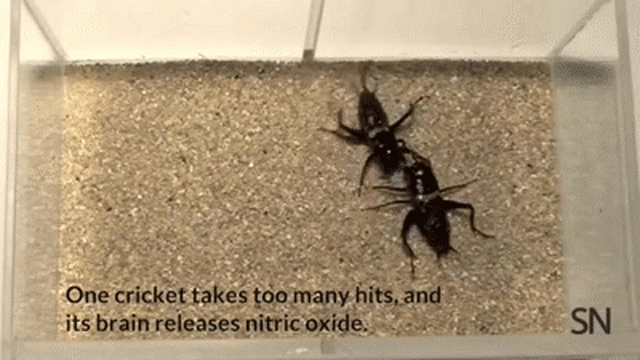Nitric oxide may be better known for turbo-charging snails, but rather than boosting aggressive behaviour, this brain chemical deals crickets a healthy dose of fear, telling them when to throw the towel in and flee a fight.
That’s according to research which appeared yesterday in the journal Science Advances. Basically, the researchers doped crickets with nitric oxide — a chemical signalling molecule known to affect a variety of physiological processes — and staged sparring matches to observe how the drug influences fighting behaviour. Turns out, nitric oxide induces a flight response, telling the losing cricket when enough is enough and it’s time to run the hell away.
Credit: Paul A. Stevenson and Jan Rillich
In the video above, two crickets face off twice. When the loser hits its limit in the first round, it flees the fight. For hours after the defeat, the insect’s nitric-oxide addled brain continues to run paranoid.
“If you block nitric oxide they recover quickly, and if you give them nitric oxide they don’t,” said behavioural neurobiologist Paul Stevenson, a coauthor of the new research. “It’s a very simple algorithm for controlling a very complicated social situation.”
Crickets, known for their spectacular fights, are a useful model organism for studying aggression. It remains to be seen whether nitric produces similar responses in other animals, but hey, at least we all know how to rig a cricket fight now. [Science Advances via Science News]
Top image via Science News
